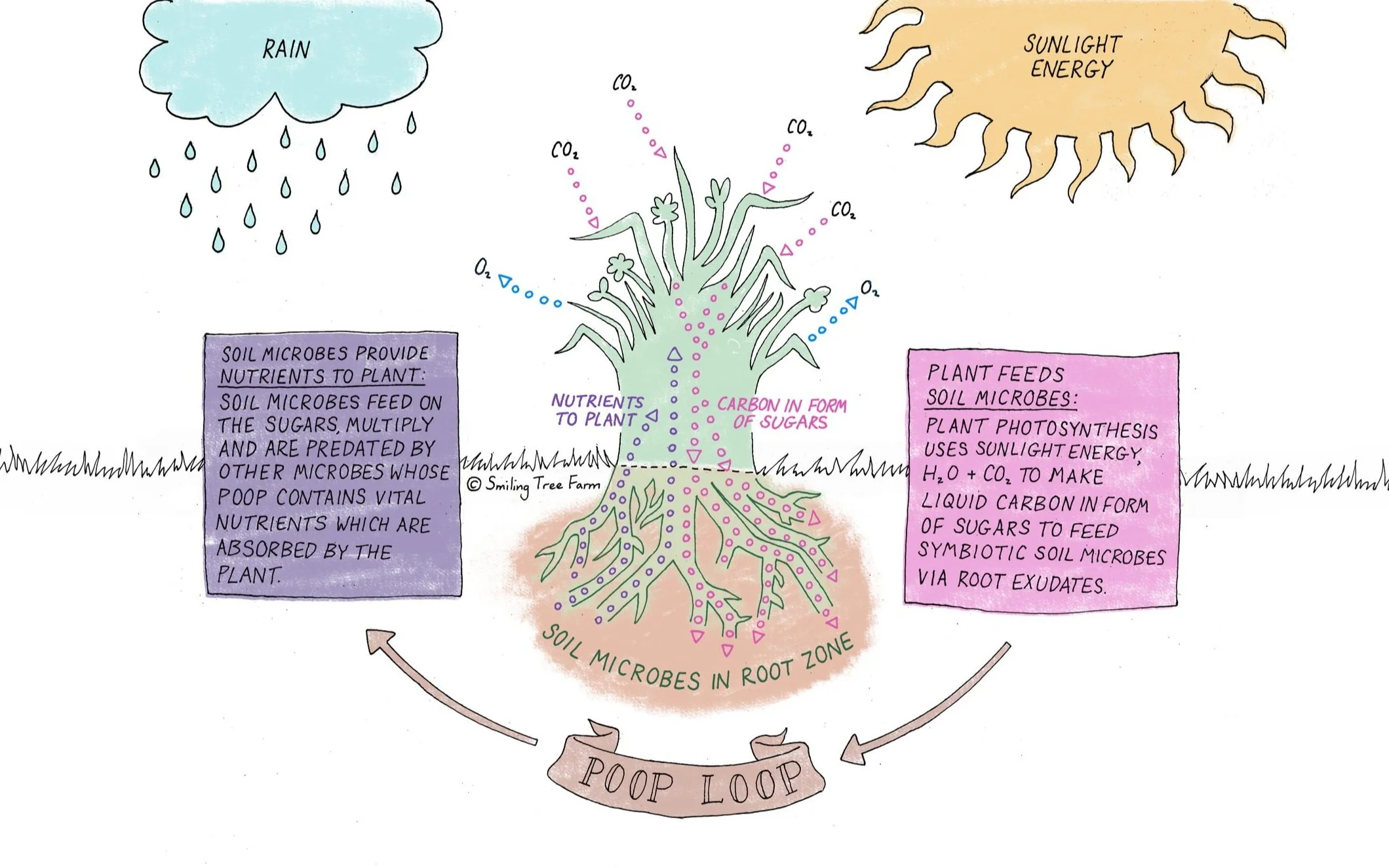The Poop Loop
“We know more about the movement of celestial bodies than we do about the soil underfoot.” Leonardo da Vinci
Soil science has come a long way since Leonardo’s day but his words still hold true. In every teaspoon of healthy soil there are over one billion micro-organisms, and despite leaps and bounds in our knowledge over the past 10 to 15 years, leading soil microbiologists freely admit that there is still much they don't understand about soil.
BASIC PLANT BIOLOGY
Through the process of photosynthesis, plants use the power of sunlight to make energy from carbon dioxide (CO2), mostly in the form of simple sugars. The green leaves absorb sunlight like solar panels, so the more leaf area there is to make energy in the form of sugar, the faster the plant can grow. In addition to using the energy for its own growth, a plant also gives away as much as 50% through its root system to ‘feed’ the soil.
NUTRIENT CYCLES
Like us, however, plants cannot live on sugar alone and they also need minerals and other nutrients. They get these from the soil or, more specifically, from the micro-organisms in the soil with which they have evolved a highly efficient symbiotic relationship. Over billions of years, plants have developed specialist nutrient cycling systems with aerobic bacteria and fungi in particular.
Plants do so by encouraging the growth of bacteria and fungi around their root systems through exuding the types of sugars that these beneficial soil organisms feed on. And by clustering tightly around plant roots, the micro-organisms return the favour by forming a dense protective barrier for the plants, keeping disease and root-feeding predators at bay.
THE POOP LOOP
In a continuous cycle of renewal, the micro-organisms are sought out by soil organism predators. The predators' poo, which is then deposited right at a plant's root zone, contains a concentrated and balanced source of nutrients in a form the plant can utilise. These nutrients, in turn, help the plant to grow and produce more sugars to feed yet more beneficial micro-organisms, which are then predated, resulting in more nutrients and the cycle continues. This is called ‘the poop loop’!
Further, evolutionary excellence means that plants have developed sophisticated ways of ensuring they receive the specific nutrients they need from the poop loop. They do this by selecting for the right organisms through the type of exudates they produce.
SOIL IS THE STOMACH OF THE PLANT
In fact, plants only get two things from above ground: sunlight and carbon dioxide from the air. They draw in all other nutrients, including water, through their root system via intricate and complex relationships with billions of soil micro-organisms. In effect, the soil is the stomach of the plant. The soil biome is, however, finely balanced and responds rapidly to change, for better or worse.
REGENERATIVE AGRICULTURE
Anything the farmer does that supports diverse soil and plant biology is regenerative and sustainable; and anything that disrupts or prevents these cycles from continuing is not. Chemical fertilisers, herbicides, pesticides and fungicides all have a drastically negative effect on the soil’s ecology, and glyphosate, in particular is deadly not only to the plants it’s sprayed on, but the soil life as well (1).
This is one of the reasons why we follow holistic regenerative and beyond organic farming practices at Smiling Tree Farm and never use any man-made chemicals. Our farming methods have been developed to nurture the soil. And everything else follows from that.
FURTHER READING
(1) Toxic Legacy, how the weedkiller Glyphosate is destroying our health and the environment by Stephanie Seneff PhD

